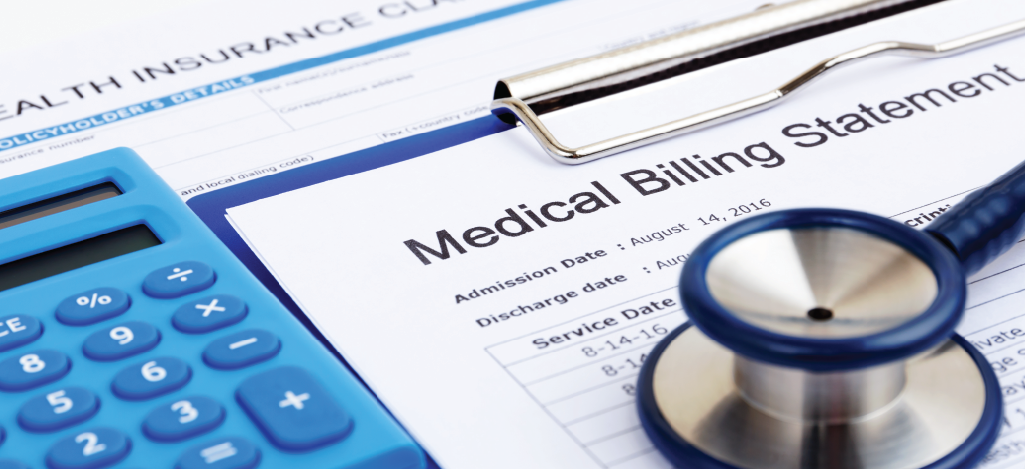Discover the ins and outs of charge entry with our comprehensive guide.
Charge entry is a crucial aspect of medical billing and revenue cycle management. It involves the process of accurately recording and entering charges for medical services rendered to patients. In this comprehensive guide, we will explore the basics of charge entry, the process in medical billing, its role in revenue cycle management, the impact of technology, and best practices.
Understanding the Basics

Definition of Charge Entry
Charge entry refers to the process of recording and entering charges for medical services provided to patients. It plays a vital role in the revenue cycle management of healthcare facilities. Accurate charge entry ensures that healthcare providers are appropriately reimbursed for the services they deliver. It is a critical step in medical billing that directly impacts the financial health of the organization.
Importance of Charge Entry
In order to fully grasp the importance of charge entry, it is essential to understand the intricacies involved in the process. When a patient receives medical treatment, a variety of services are provided, ranging from diagnostic tests to surgical procedures. Each of these services has a specific code assigned to it, known as a medical code. These codes are used to identify and categorize the services rendered, allowing for accurate billing and reimbursement.
Charge entry involves the meticulous task of assigning the appropriate medical codes to the services provided. This requires a thorough understanding of the medical coding system, such as the International Classification of Diseases (ICD) and Current Procedural Terminology (CPT) codes. The accuracy of these codes is crucial, as any errors or omissions can lead to claim denials or underpayment.
Furthermore, charge entry also entails determining the correct pricing for the services rendered. Healthcare facilities need to consider various factors when setting prices, such as the complexity of the procedure, the resources utilized, and the prevailing market rates. It is essential to strike a balance between affordability for patients and ensuring the financial sustainability of the organization.
Another vital aspect of charge entry is ensuring that the supporting documentation is complete and accurate. This documentation includes medical records, test results, and any other relevant information that substantiates the services provided. Without proper documentation, healthcare providers may face challenges in justifying the charges and may encounter difficulties during audits or reviews.
Lastly, charge capture is a critical component of charge entry. It involves capturing all the relevant charges for the services provided, ensuring that no services are overlooked or missed. This requires a meticulous review of the patient's medical records, ensuring that all services, procedures, and supplies are accurately recorded.
Key Components
Charge entry involves various key components that need to be considered for successful implementation. These components include:
- Coding: Assigning the appropriate medical codes to the services rendered
- Pricing: Determining the correct pricing for the services
- Documentation: Ensuring the supporting documentation is complete and accurate
- Charge Capture: Capturing all the relevant charges for the services provided
Effective management of these components ensures proper charge entry and helps streamline the revenue cycle. By diligently adhering to these components, healthcare facilities can optimize their financial performance, minimize claim denials, and ensure accurate reimbursement for the services they provide.
The Charge Entry Process in Medical Billing
The charge entry process in medical billing is a crucial step in the revenue cycle management of healthcare organizations. It involves the accurate and timely recording of charges for the services rendered to patients. By following a series of steps, healthcare organizations can ensure that charges are properly recorded and submitted for reimbursement.
Steps
The charge entry process typically follows a series of steps to ensure accurate and timely recording of charges. These steps include:
Reviewing patient medical records
Before entering charges, it is essential to review the patient's medical records to identify the services rendered. This step ensures that all the services provided are captured and accurately recorded.
Assigning appropriate medical codes
Once the services are identified, the next step is to assign appropriate medical codes to each service. This is done following coding guidelines such as the Current Procedural Terminology (CPT) and the International Classification of Diseases (ICD) coding systems. Proper coding ensures that the services are accurately described, facilitating efficient billing and reimbursement processes.
Determining the correct pricing
After assigning the medical codes, it is crucial to determine the correct pricing for each service. This involves considering various factors such as payer contracts, fee schedules, and any applicable discounts or negotiated rates. Accurate pricing ensures that the healthcare organization receives appropriate reimbursement for the services provided.
Entering the charges
Once the services and pricing are determined, the charges are entered into the medical billing software or system. This step requires attention to detail to ensure that all the relevant information is accurately recorded.
Verifying the accuracy of charges
After entering the charges, it is essential to verify their accuracy. This involves reviewing the entered information, cross-checking it with the medical records and coding guidelines, and ensuring that there are no discrepancies or errors. Verifying the accuracy of charges minimizes the risk of billing errors and claim denials.
Submitting charges for reimbursement
The final step in the charge entry process is submitting the charges to the insurance companies for reimbursement. This involves generating and sending claims electronically or through paper submission, following the specific requirements of each payer. Timely and accurate submission of charges is crucial for prompt reimbursement.
By following these steps diligently, healthcare organizations can ensure proper charge entry and minimize the risk of billing errors. A well-executed charge entry process contributes to efficient revenue cycle management and financial stability.
Common Errors

Although it is a critical process, errors can still occur. It is important to be aware of common errors that can occur during the charge entry process to implement measures to prevent them. Some common errors in the process include:
- Incorrect coding: One of the most significant errors in charge entry is incorrect coding. Using the wrong codes or applying codes that do not accurately describe the services provided can lead to underbilling or overbilling. This not only affects the revenue of the healthcare organization but also raises compliance concerns.
- Mistakes in pricing: Another common error is mistakes in pricing. If the pricing for services is not accurately determined or entered, it can result in revenue loss for the healthcare organization. Pricing errors can occur due to factors such as outdated fee schedules, failure to consider payer contracts, or human error..
- Incomplete or missing documentation: Incomplete or missing documentation can lead to claim denials and delays in reimbursement. It is crucial to ensure that all necessary documentation, such as medical records, test results, and physician orders, is complete and available for reference during the process.
- Failure to capture all charges: Sometimes, healthcare organizations may fail to capture all the charges for the services provided. This can occur due to oversight or lack of awareness of all billable services. Failing to capture all charges can result in revenue loss and affect the financial stability of the healthcare organization.
To maintain an efficient process and minimize errors, it is important to implement robust quality checks and regular audits. These measures help identify and rectify errors, ensure compliance with coding and billing guidelines, and optimize revenue generation. Continuous training and education of staff involved in the charge entry process also contribute to improved accuracy and efficiency.
Role in Revenue Cycle Management
Impact of Accurate Charge Entry on Revenue
Accurate charge entry is crucial for maintaining a healthy revenue cycle. Properly recorded charges ensure that healthcare providers receive the appropriate reimbursement for their services. It minimizes revenue leakage, optimizes cash flow, and contributes to the financial stability of healthcare organizations.
Consequences of Inaccurate Charge Entry
Inaccurate charge entry can have severe consequences that impact the financial health of healthcare organizations. Some of the consequences include:
- Delayed or denied reimbursements from insurance companies
- Increased claim rejections and subsequent rework
- Revenue loss due to underbilling or missed charges
- Compliance issues leading to penalties or legal ramifications
To mitigate these consequences, healthcare organizations must prioritize accuracy and implement effective charge entry strategies.
Technology and Charge Entry
Automation
Advancements in technology have revolutionized charge entry in medical billing. Automation tools and electronic systems have streamlined the process, improving accuracy and efficiency. Automated coding and charge capture systems minimize errors and enhance productivity by reducing manual interventions and time-consuming tasks.
Benefits
Electronic charge entry systems offer several advantages over traditional manual methods. Some key benefits include:
- Improved accuracy in coding and charge capture
- Enhanced productivity and reduced processing time
- Real-time validation and error checks
- Easy integration with billing software and electronic health records
Adopting electronic charge entry systems can significantly enhance the efficiency and effectiveness of the process.
Best Practices

Training and Education
Proper training and education are essential for charge entry professionals to perform their roles effectively. Continuous learning and understanding of coding guidelines, pricing rules, and documentation requirements help ensure accuracy. Frequent training sessions, industry updates, and certifications can empower professionals with the knowledge and skills necessary for their roles.
Regular Auditing and Quality Checks
Conducting internal audits helps identify errors, discrepancies, and areas for improvement. Quality checks should encompass coding accuracy, pricing verification, documentation completeness, and charge capture. Timely feedback and corrective actions based on audit findings contribute to continuous process improvement and mitigate potential revenue leakage.
In conclusion, charge entry is a vital component of medical billing and revenue cycle management. Understanding the basics, following a systematic process, recognizing the role of charge entry in revenue cycle management, leveraging technology advancements, and implementing best practices are essential for accurate and efficient charge entry. By prioritizing accuracy, healthcare organizations can optimize revenue, reduce errors, and ensure financial stability.
Going Forward with BillFlash
With BillFlash, practices can go further by optimizing their revenue cycle, efficiently collecting past-due A/R, and providing patients with a convenient and secure payment experience. With a user-friendly interface and industry experts available for all your billing, payments and collections needs, BillFlash is the perfect solution for small practices.

